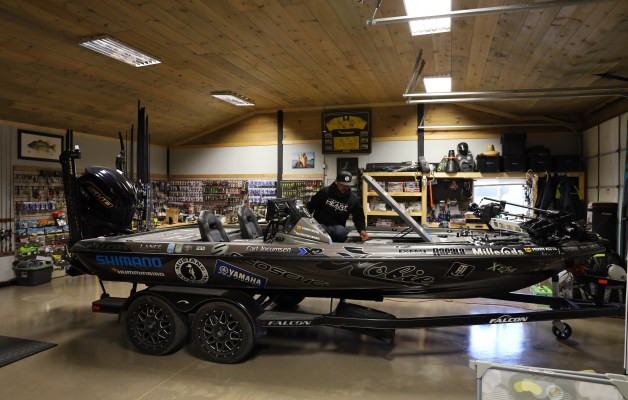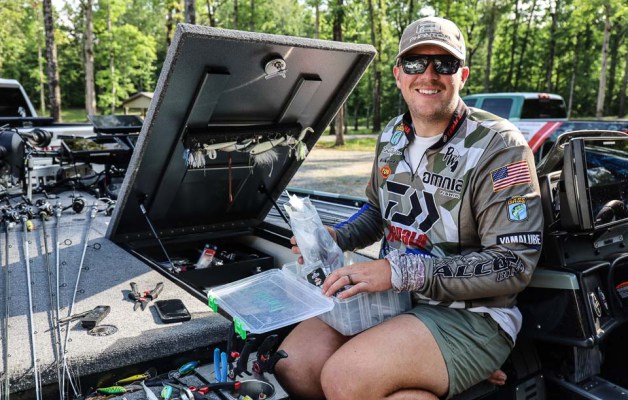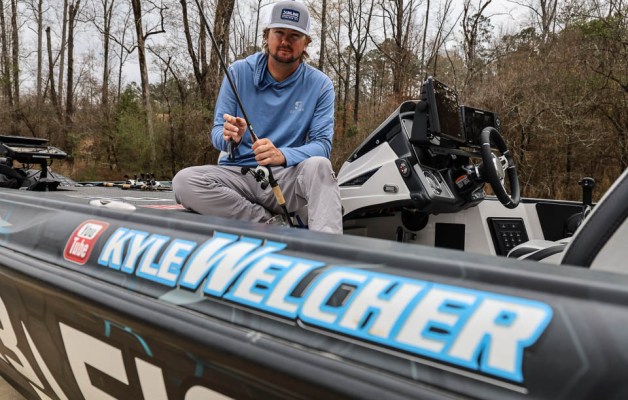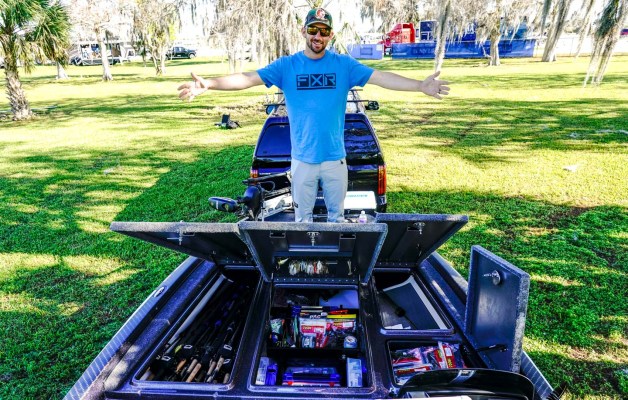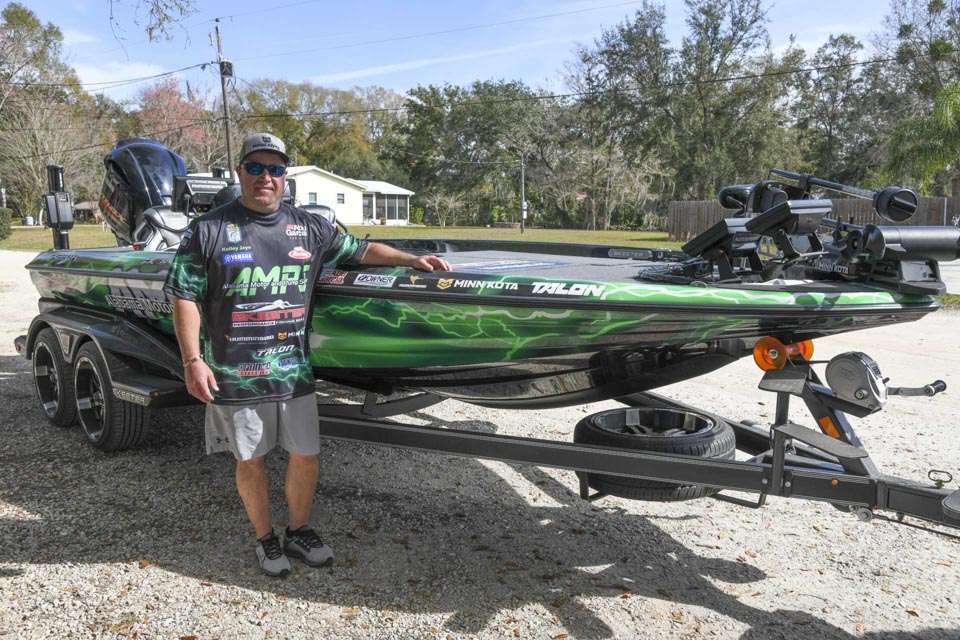
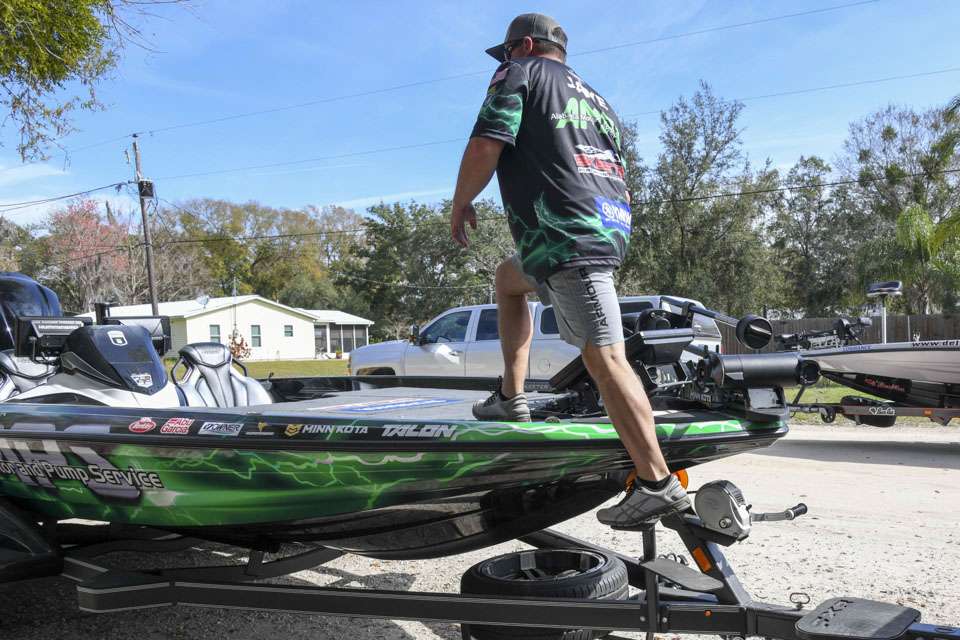
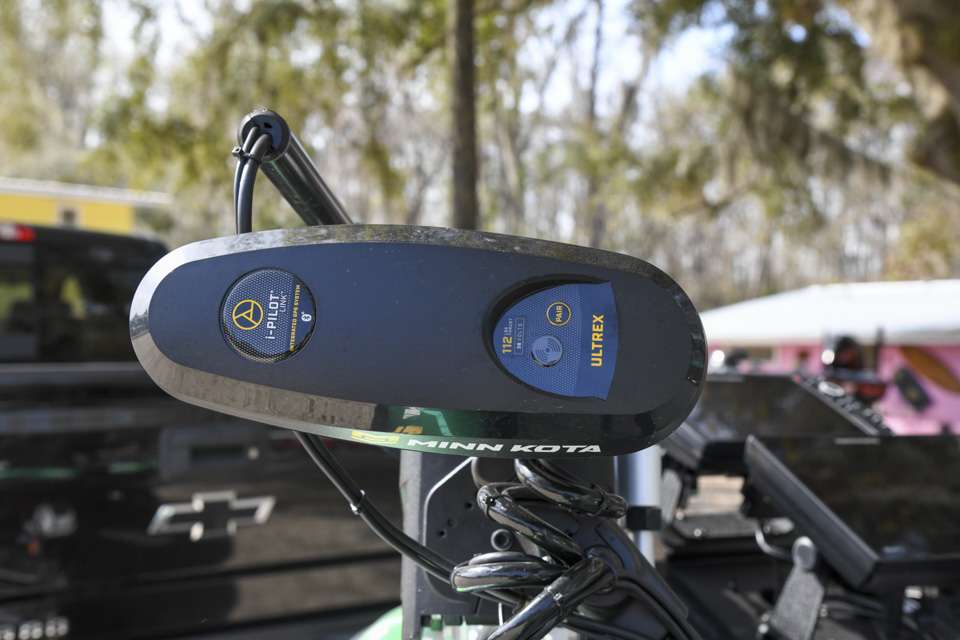
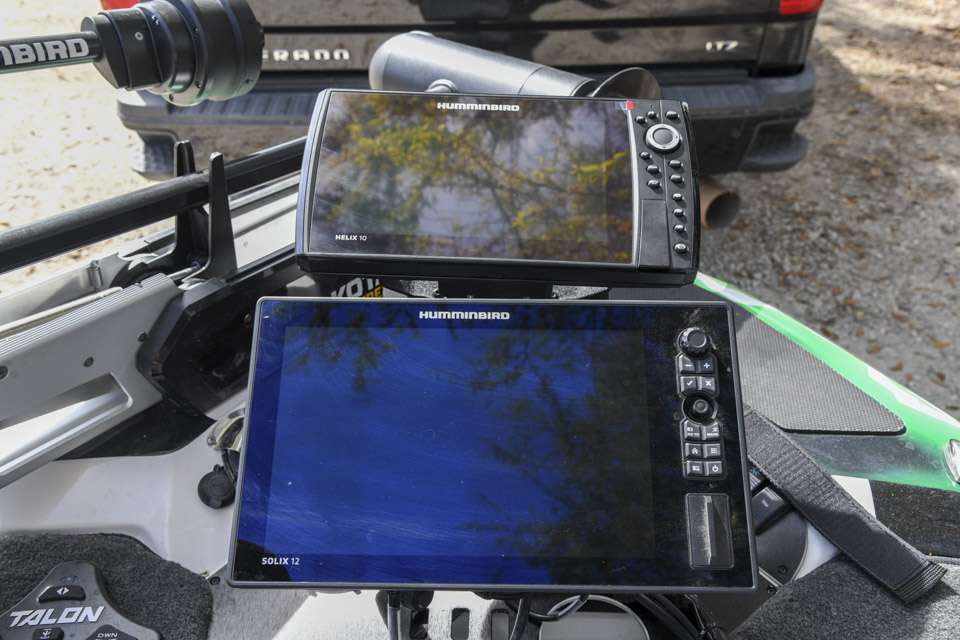
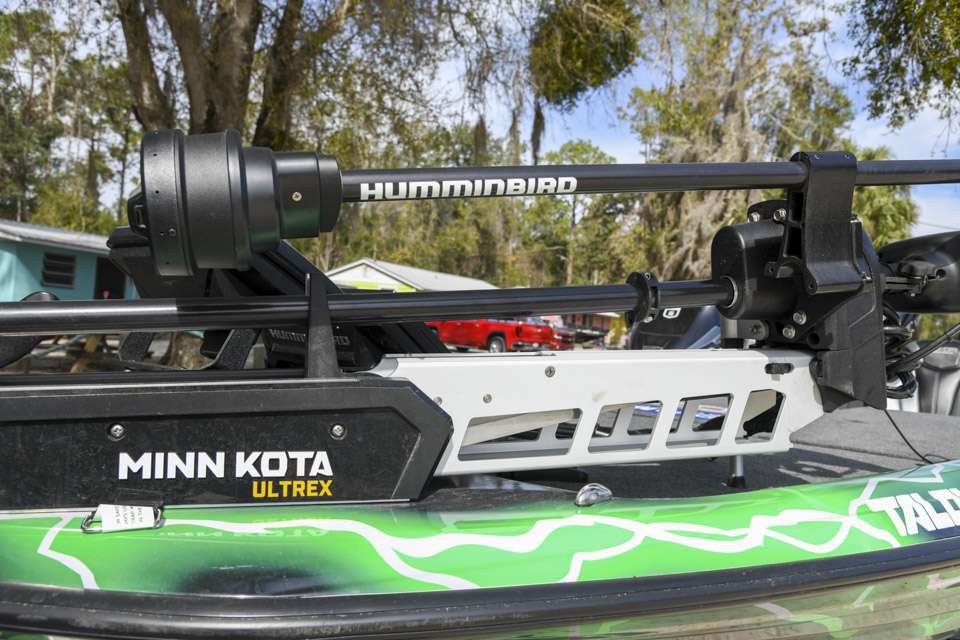
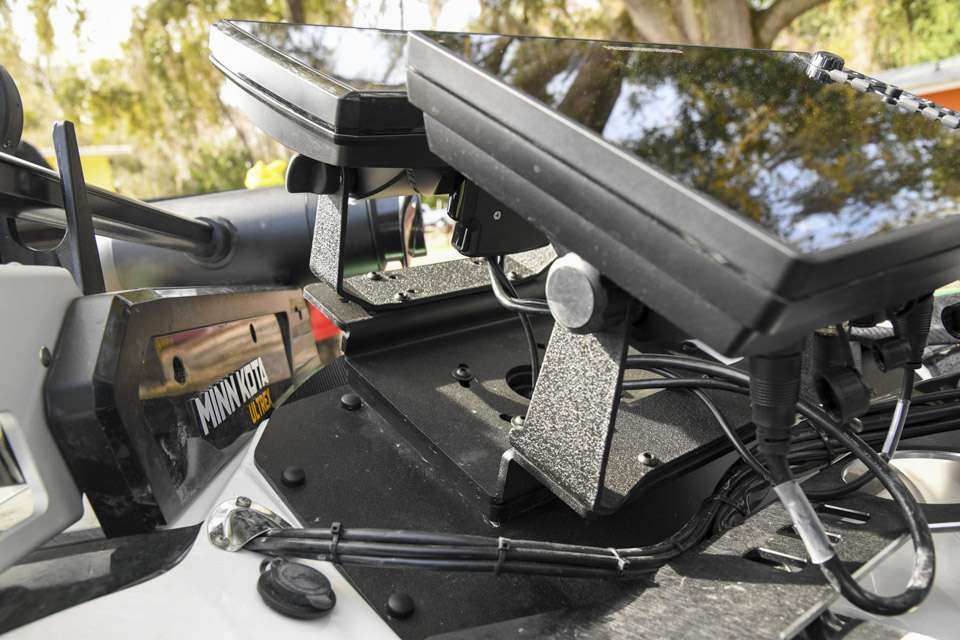
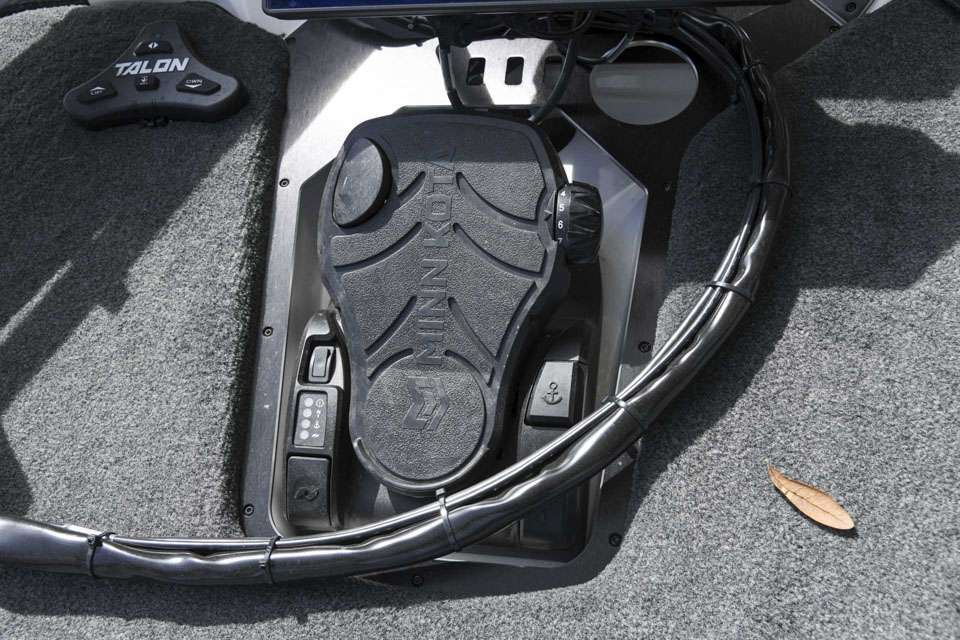
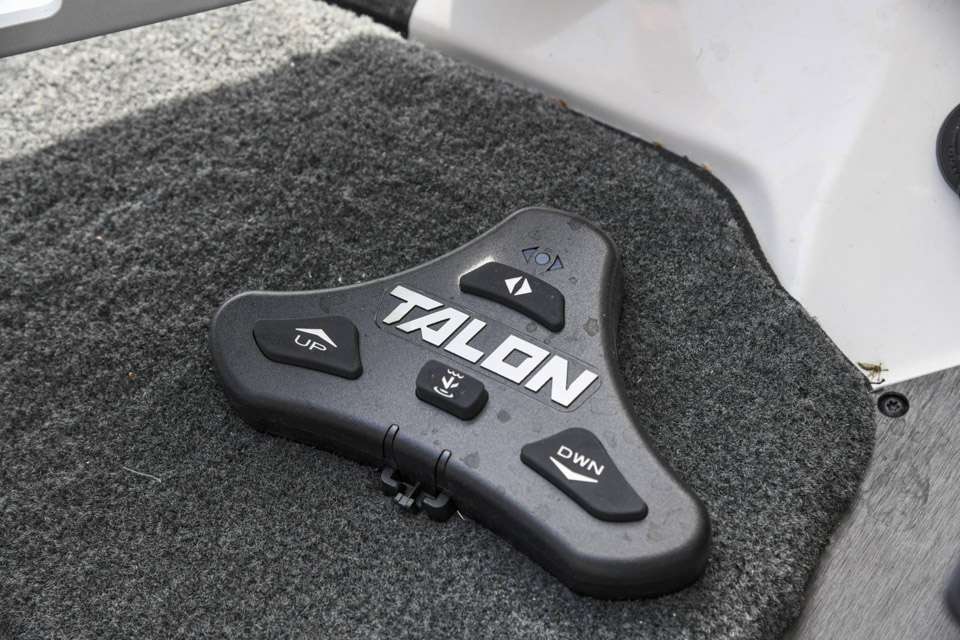
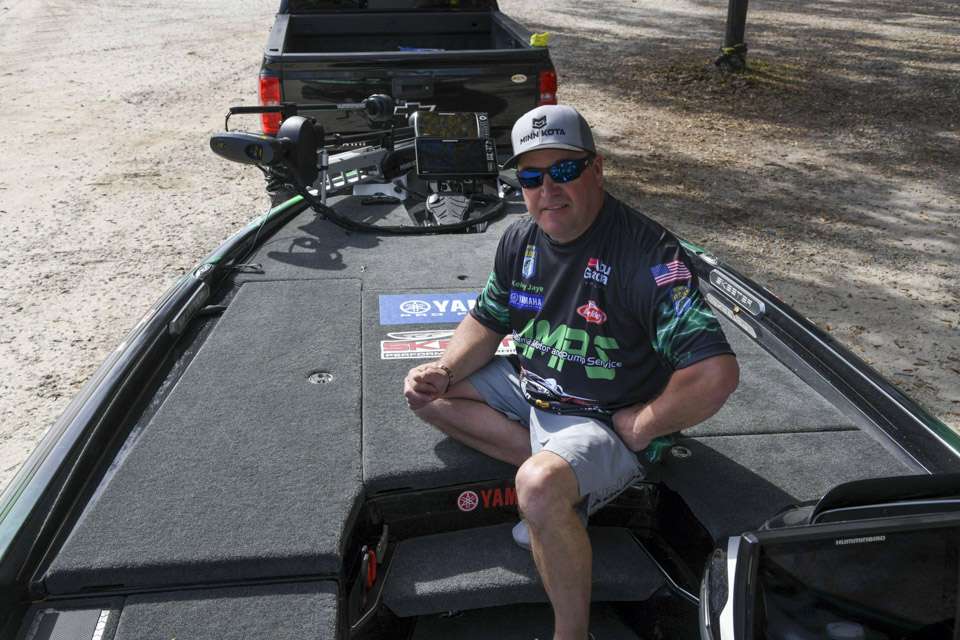
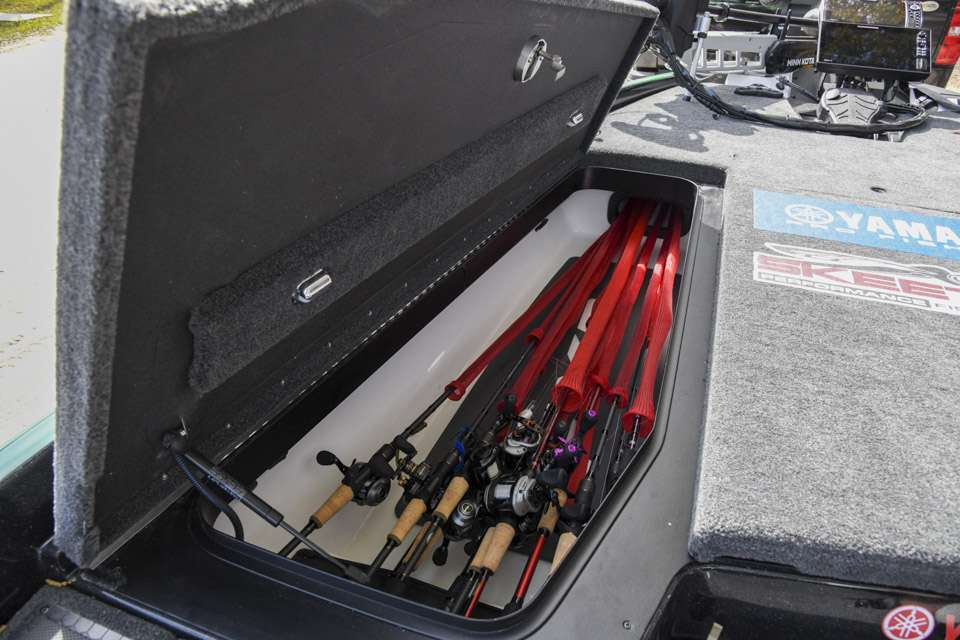
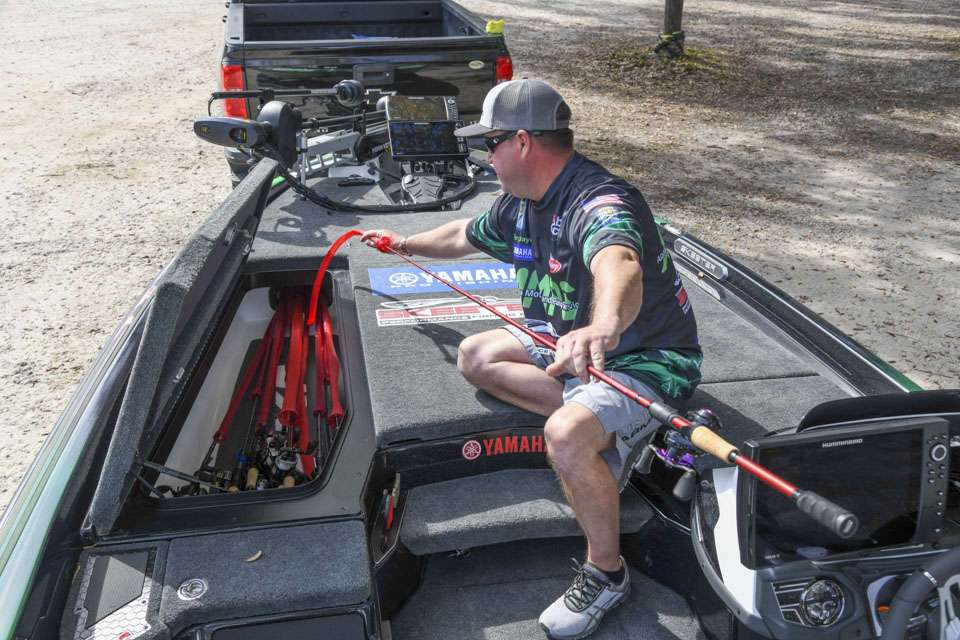
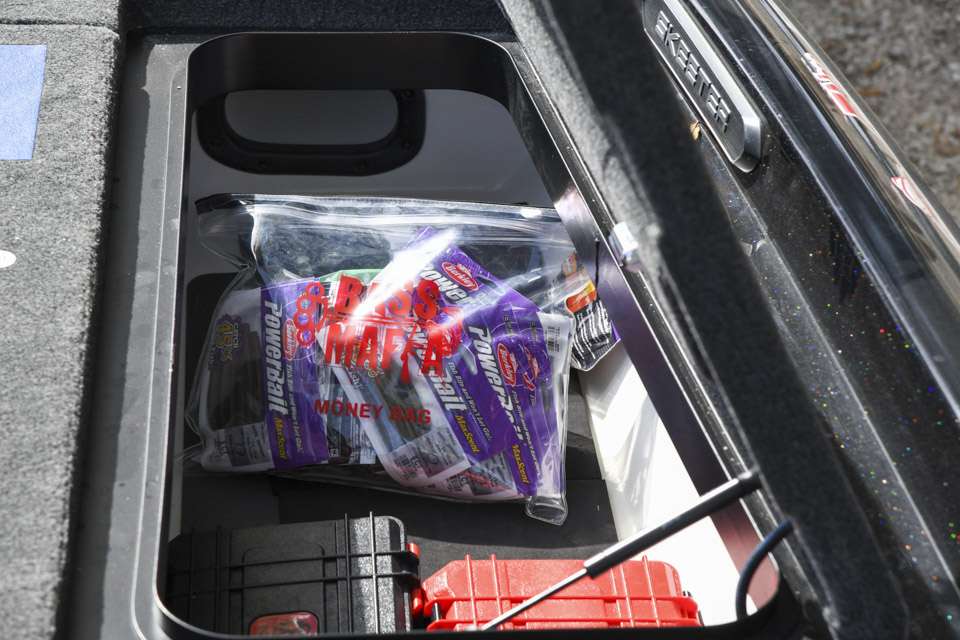
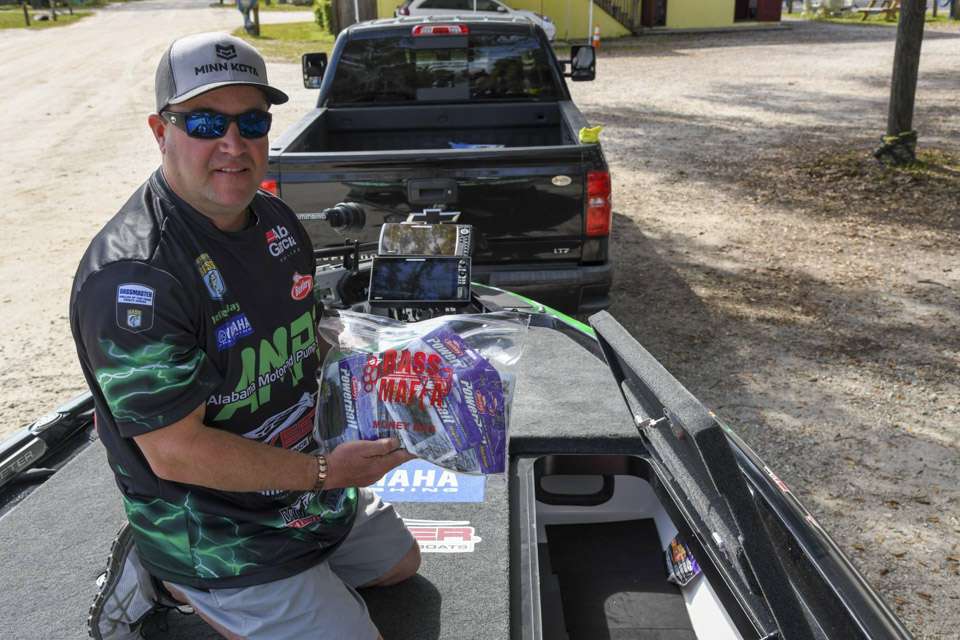
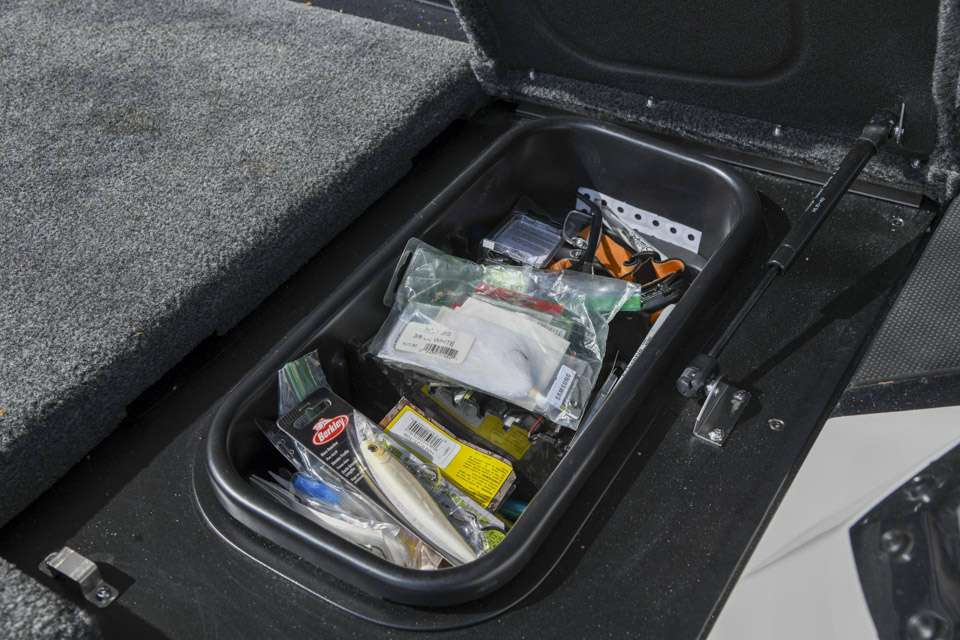
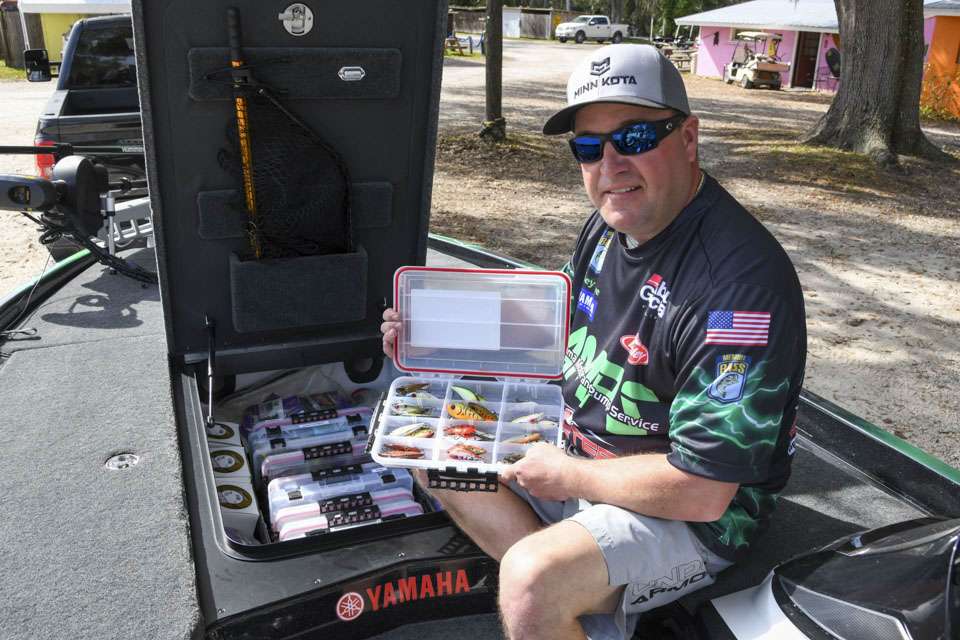
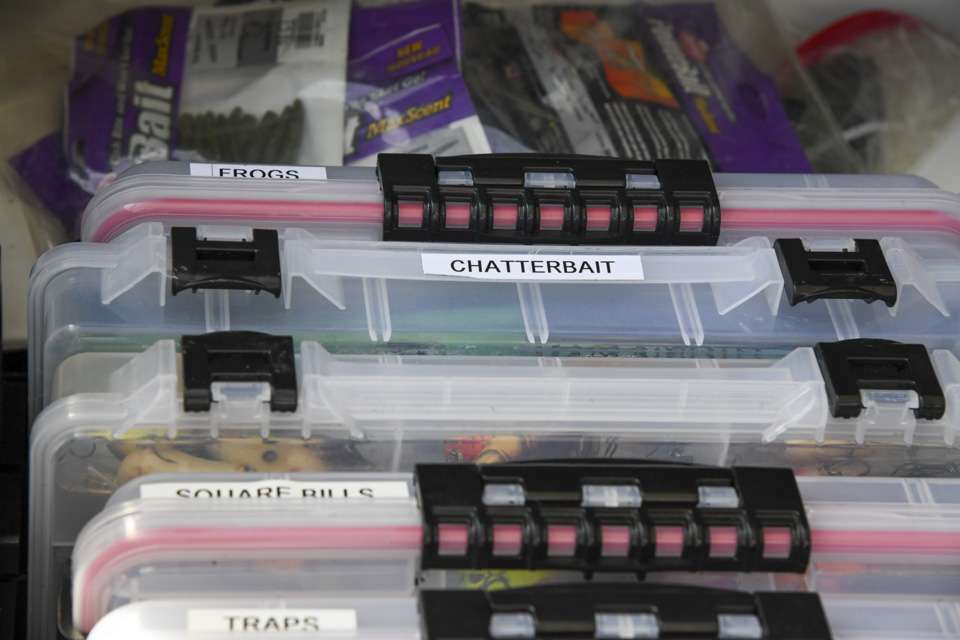
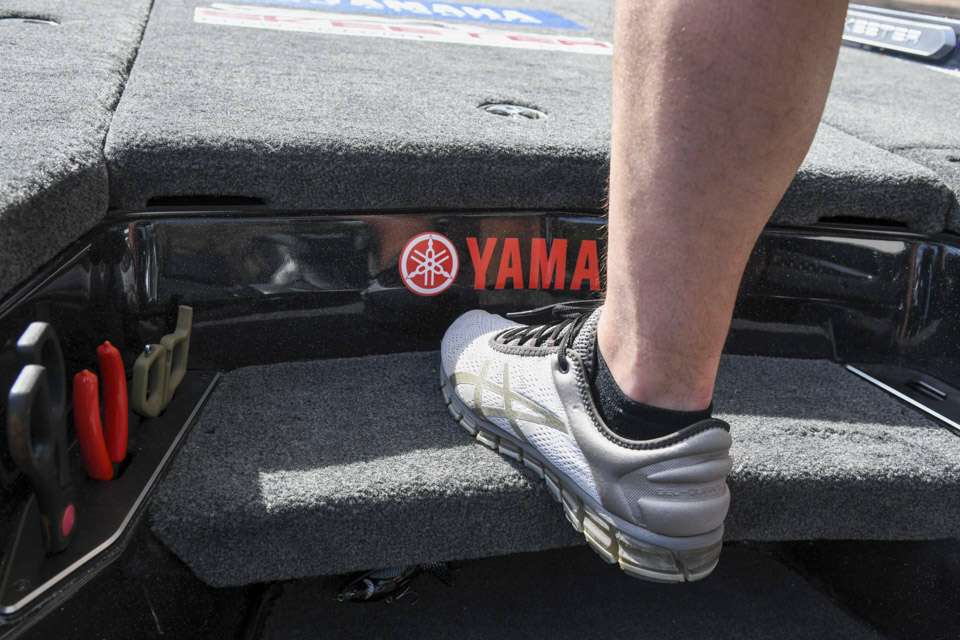
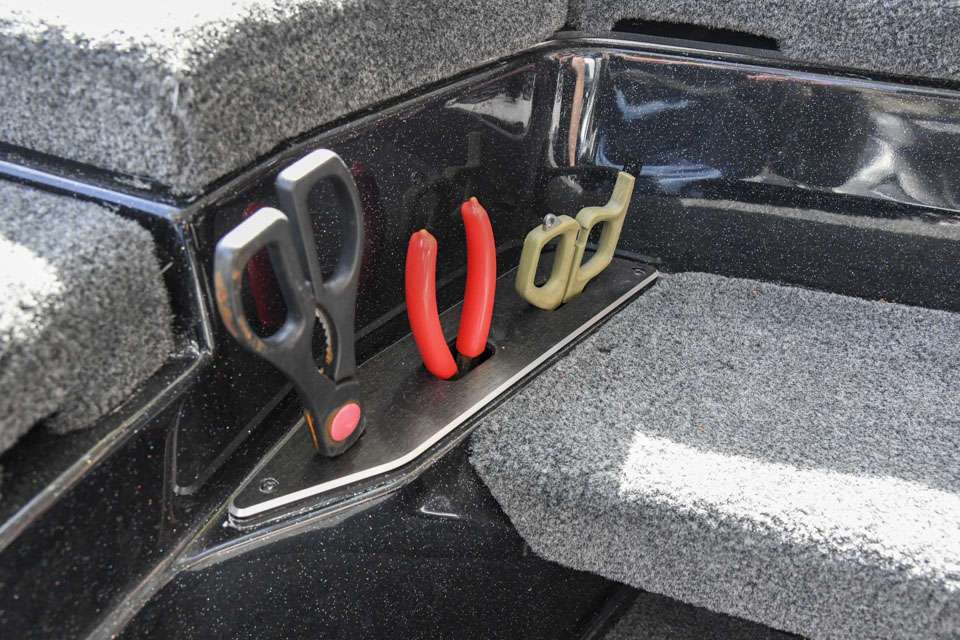
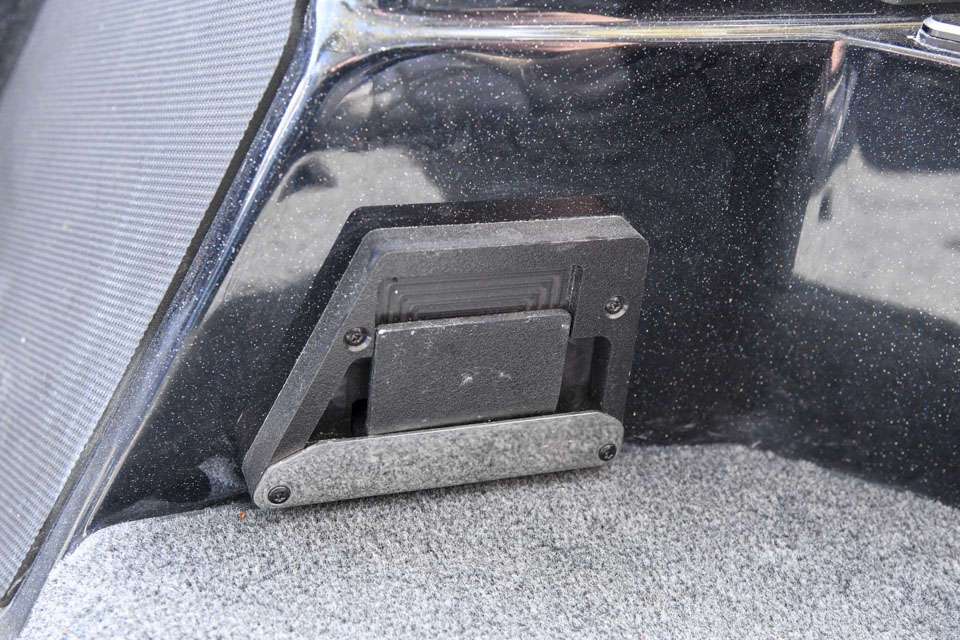
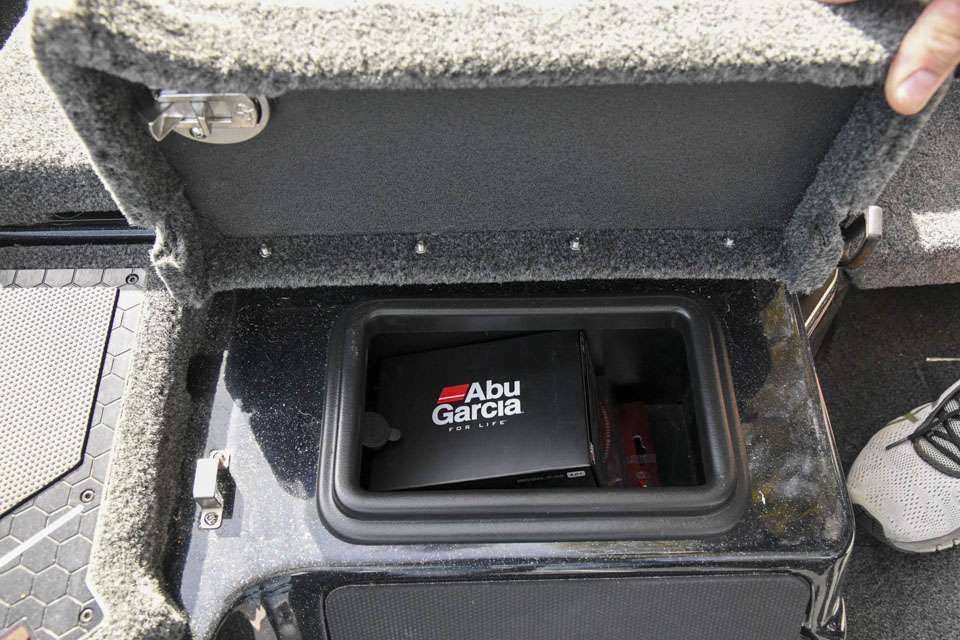
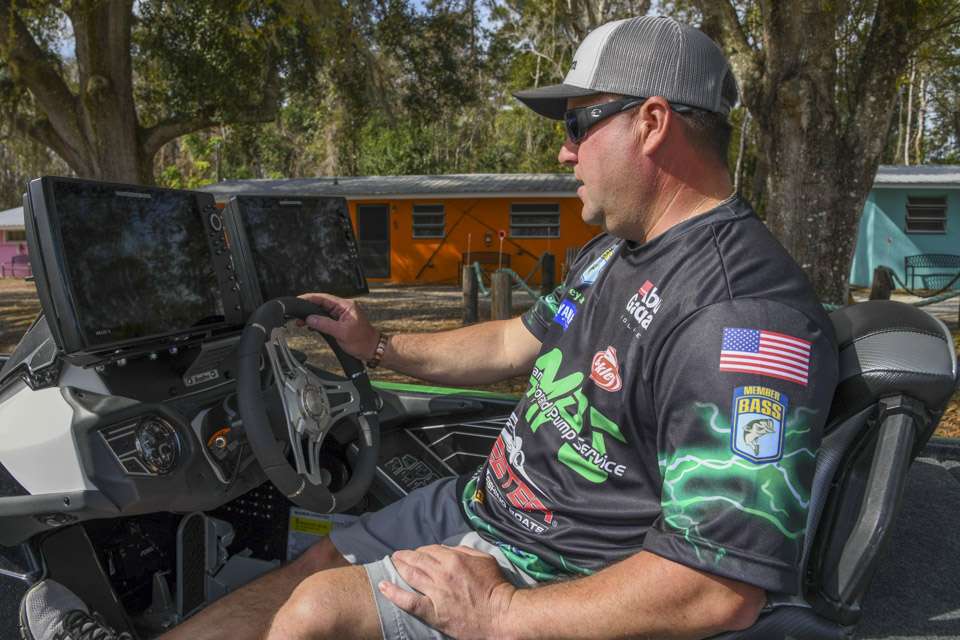
âThis is where you do most of your looking during practice, idling ledges and stuff,â Jaye explained. âRight here, I want two 12s so I can see. Iâve got a full view while Iâm idling. I can keep my map on one, and then split the other one, and have Down Scan and 360 on the other one.â
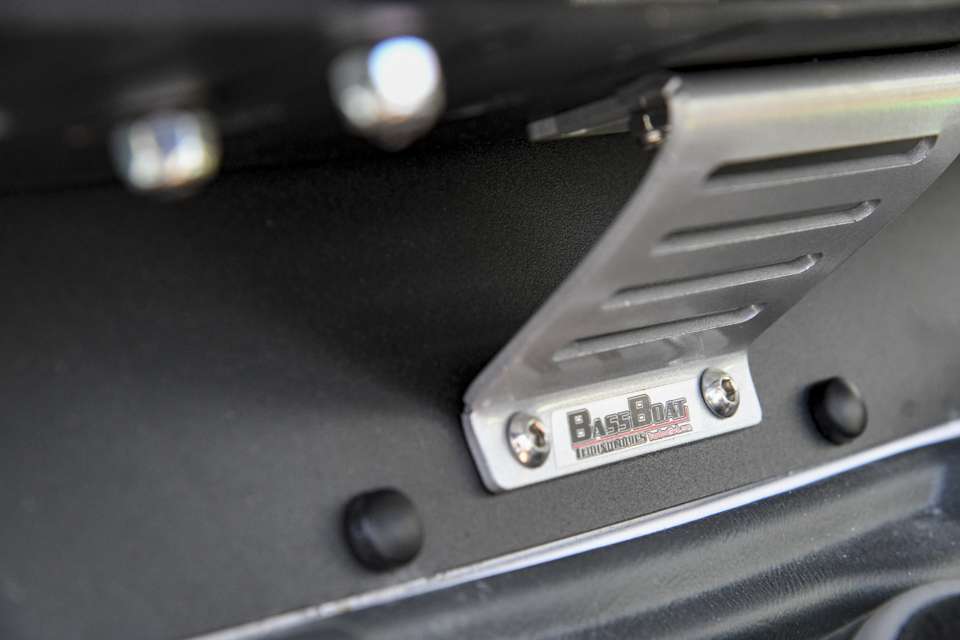
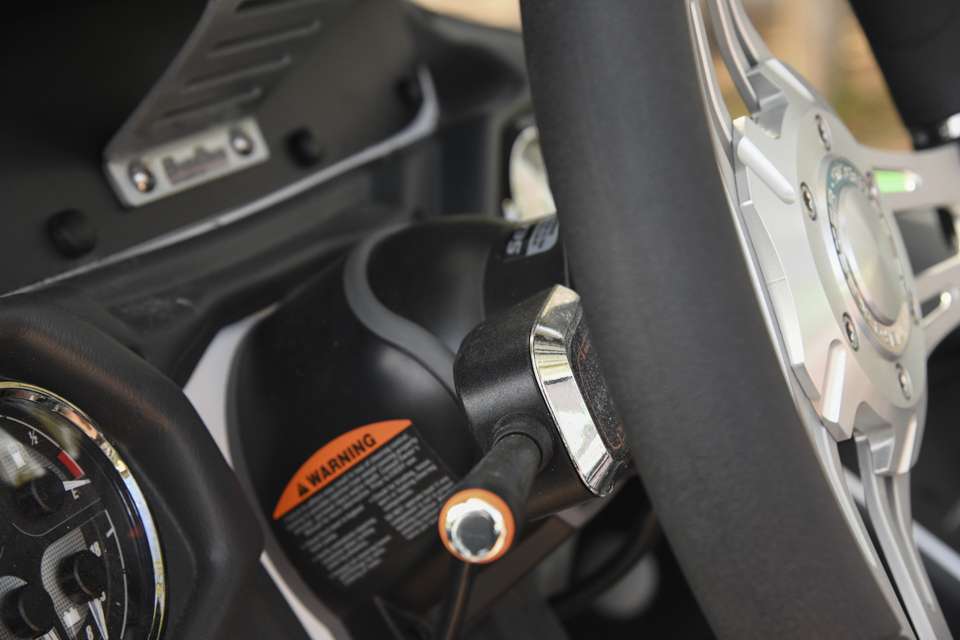
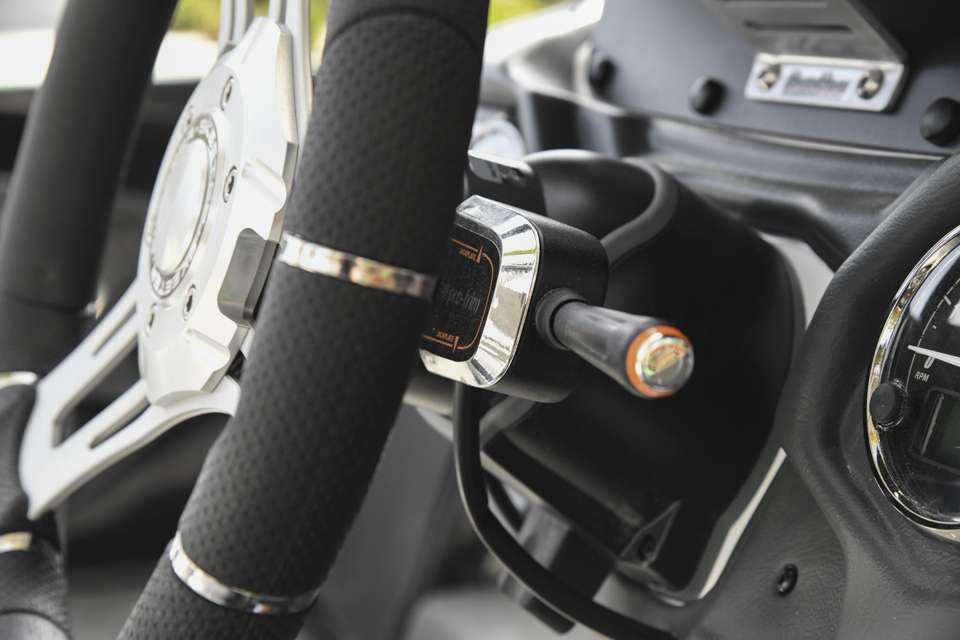
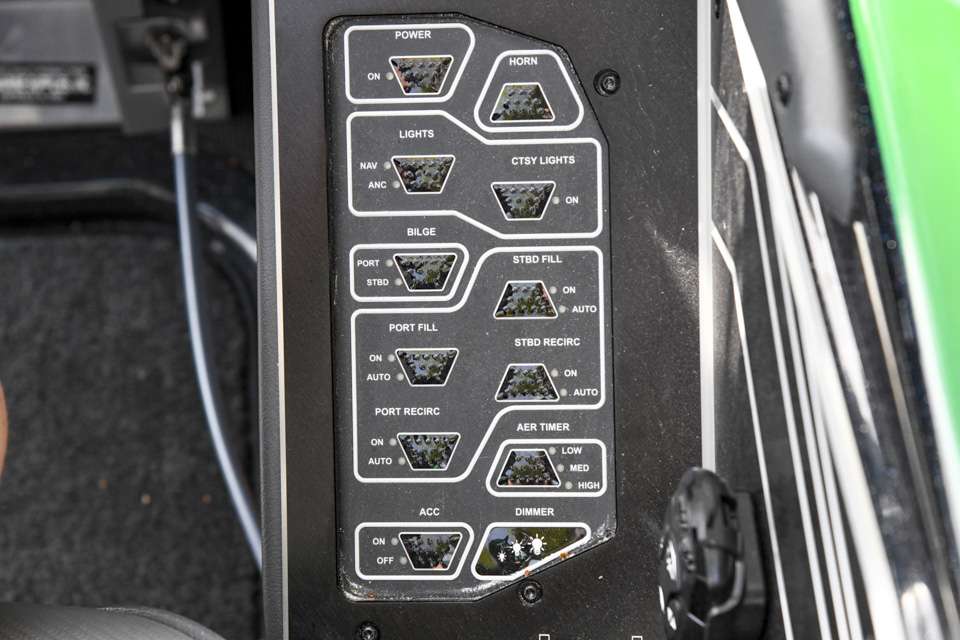
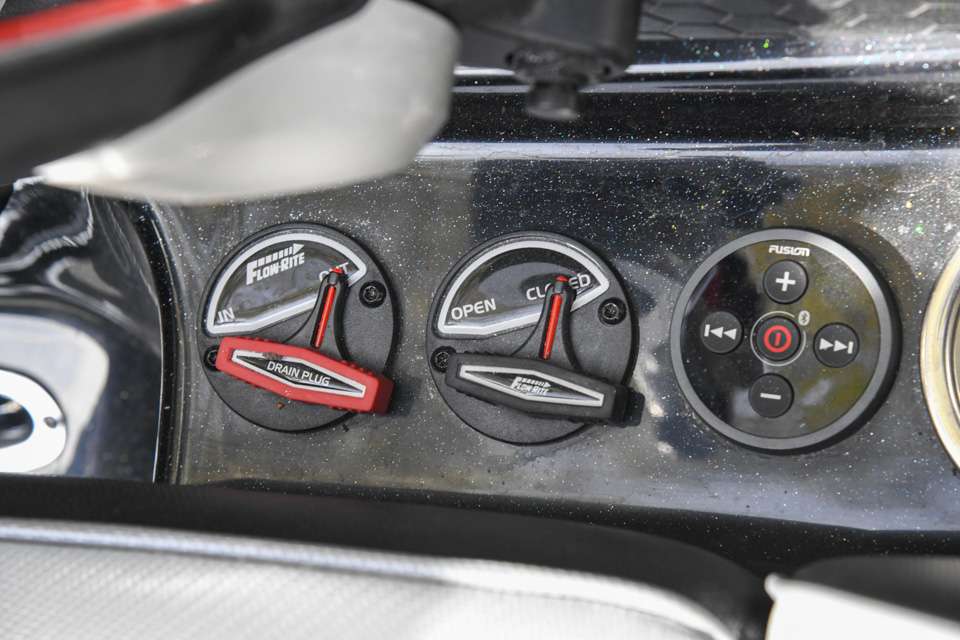
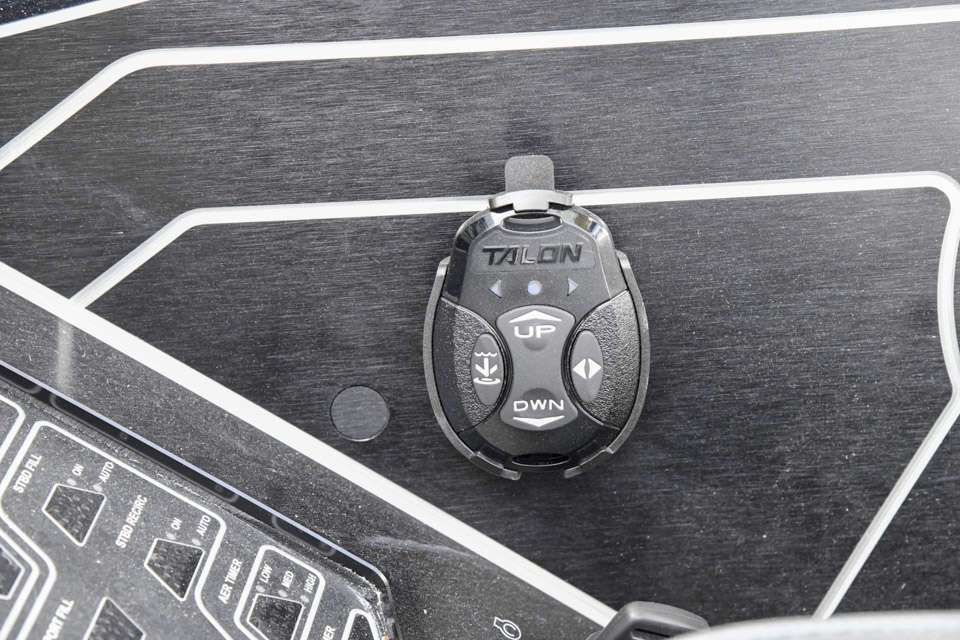
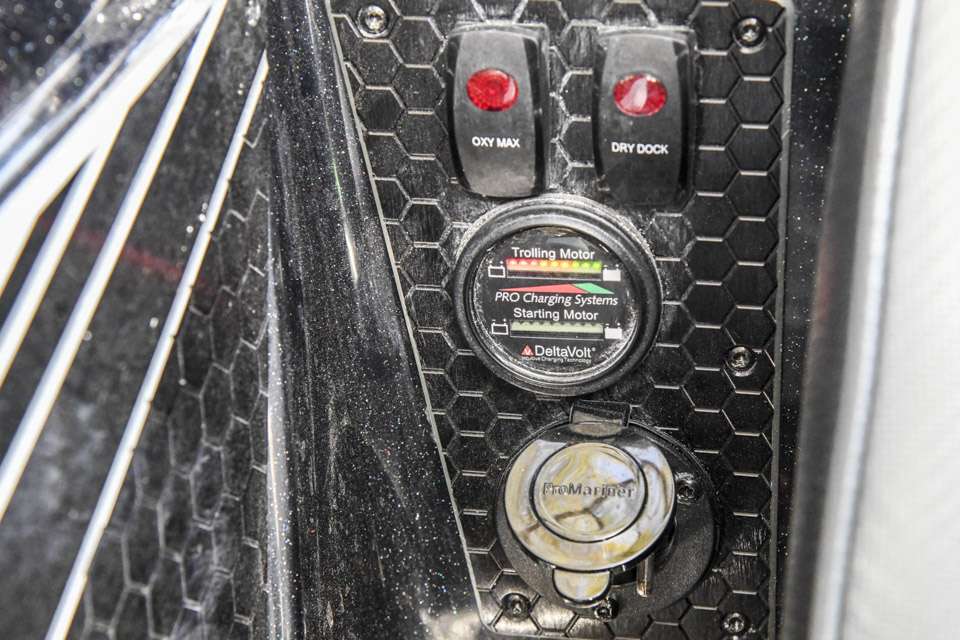
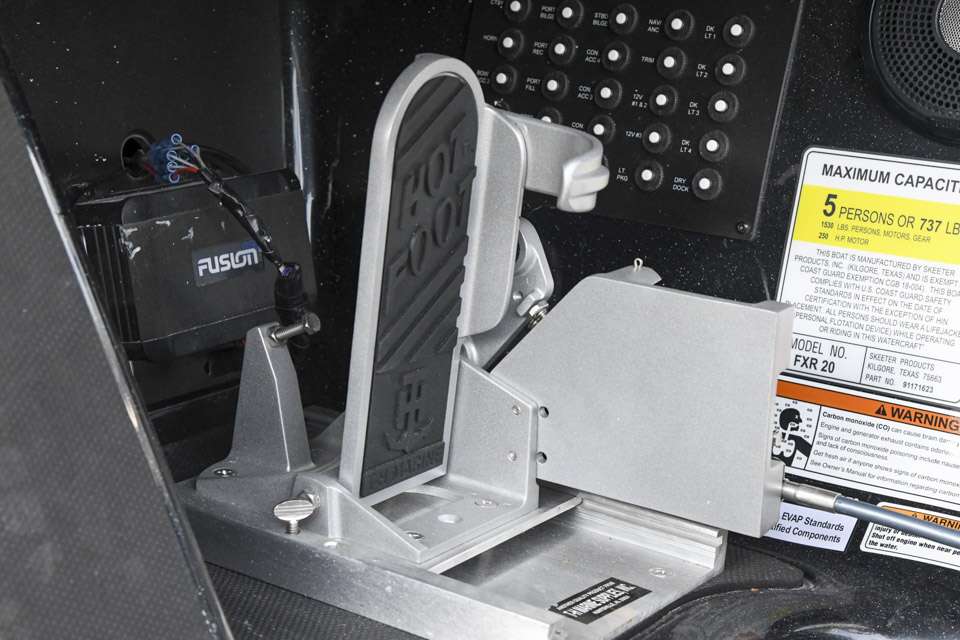
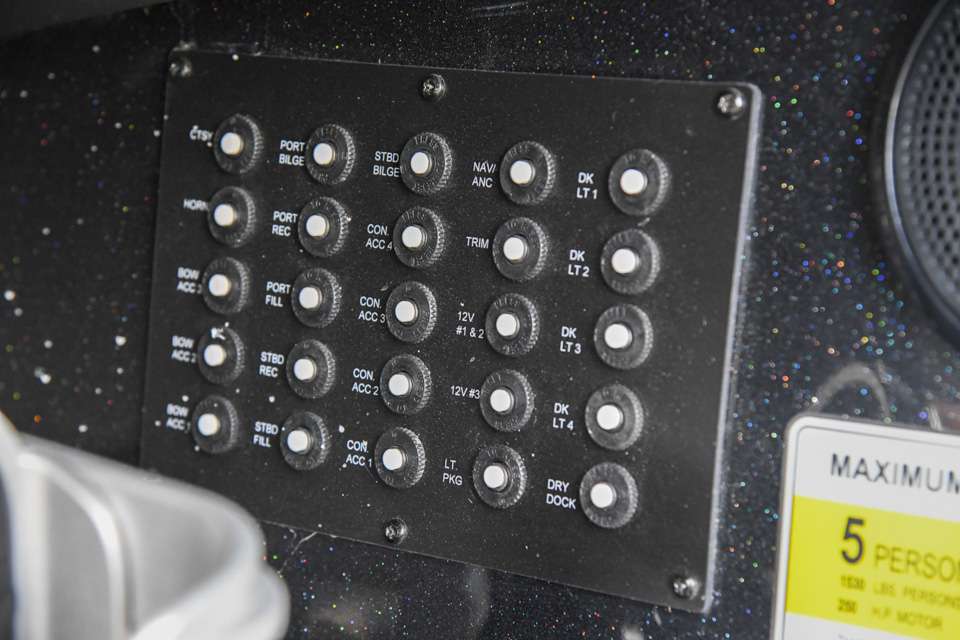
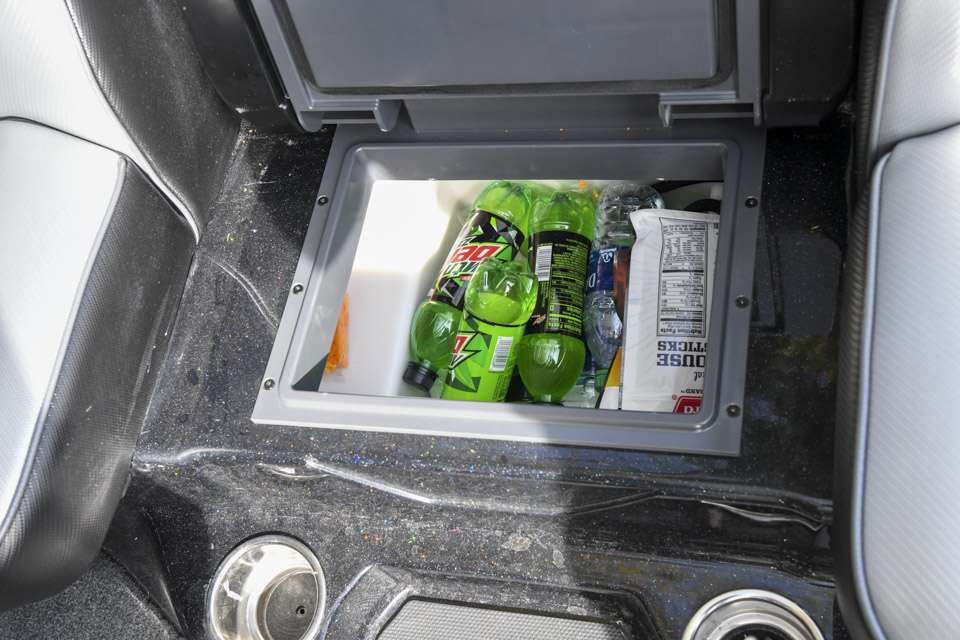
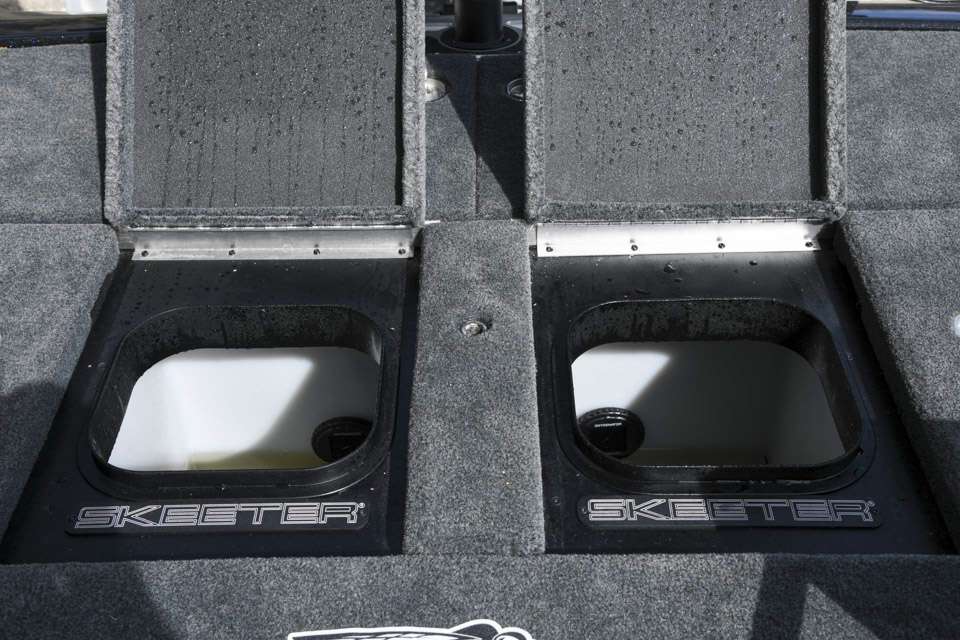
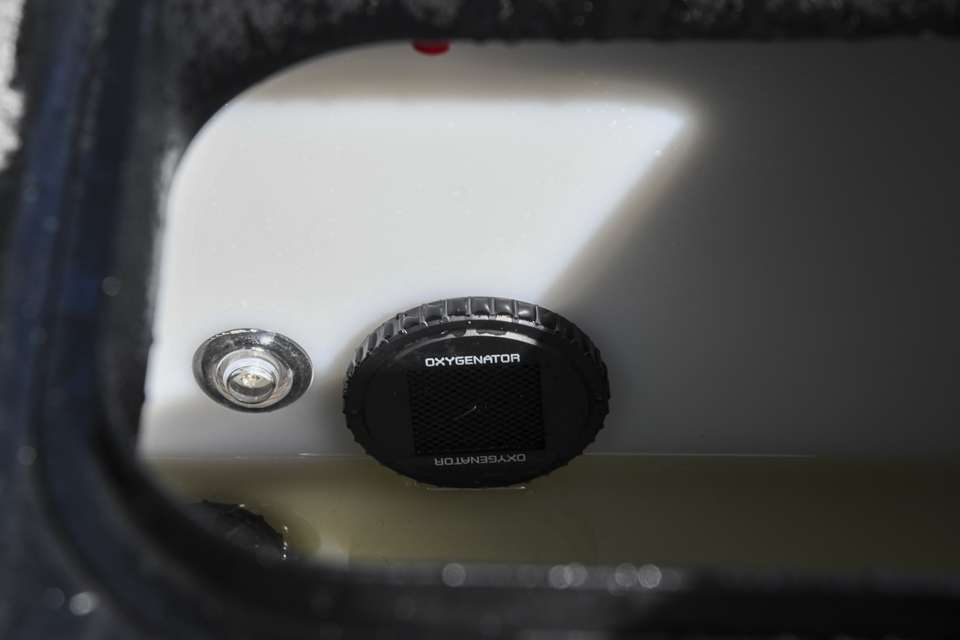
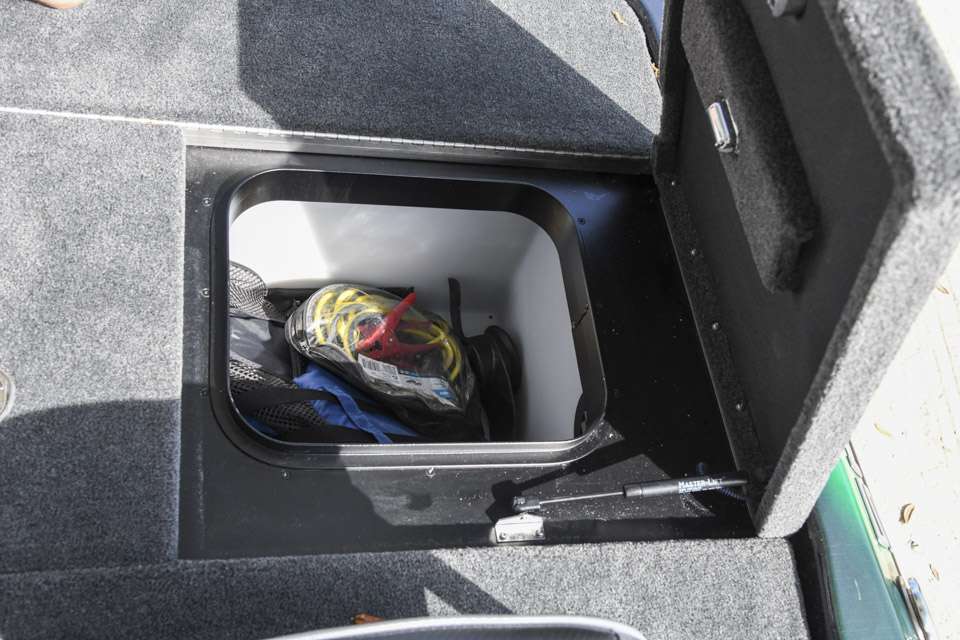
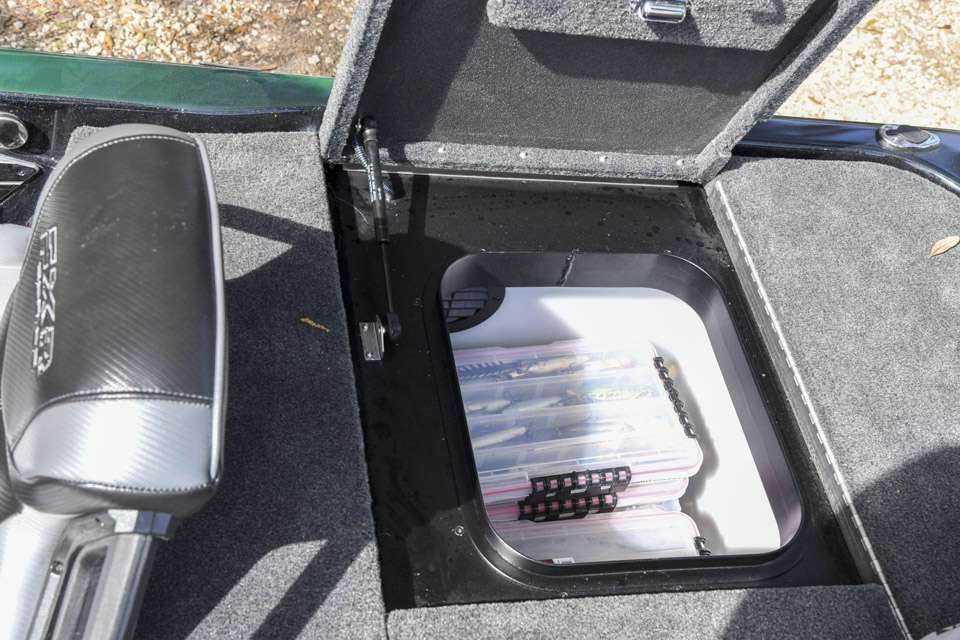
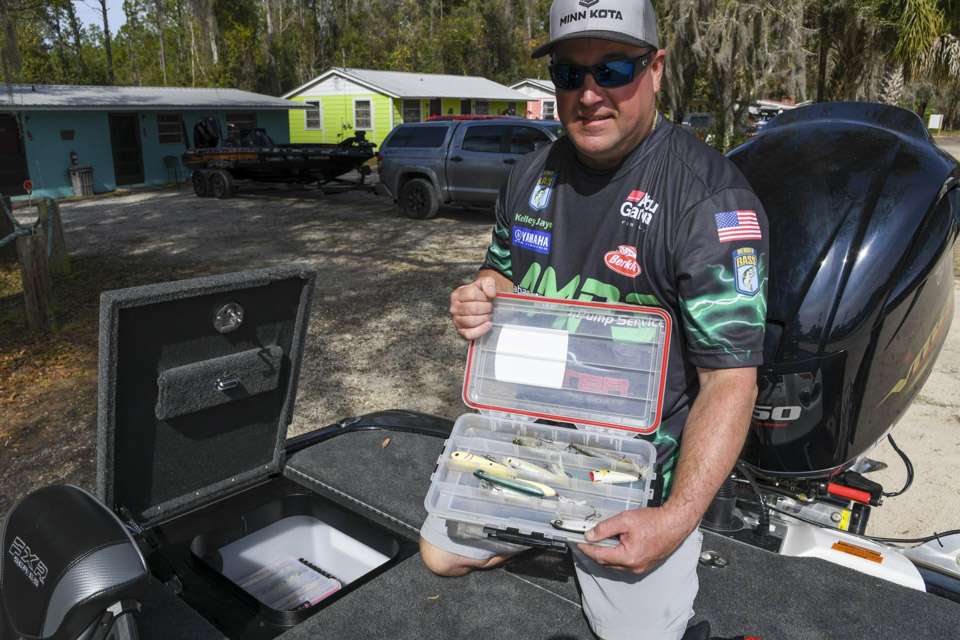
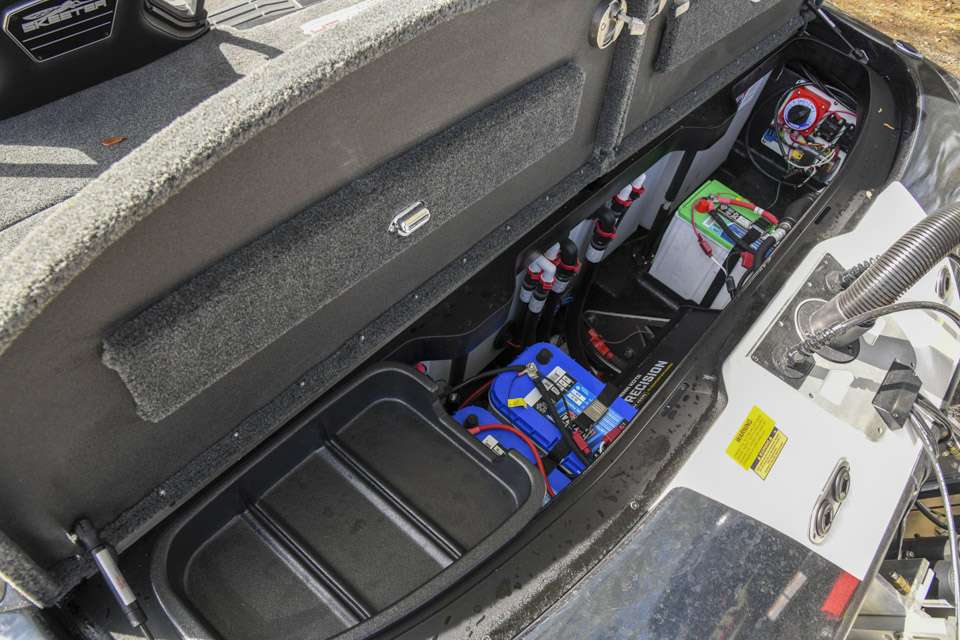
âWeâve got some room in here now,â Jaye said. âI like all the room. Usually itâs just packed.â
He said he plans to add a second cranking battery so it can run in parallel to provide plenty of 12-volt power.
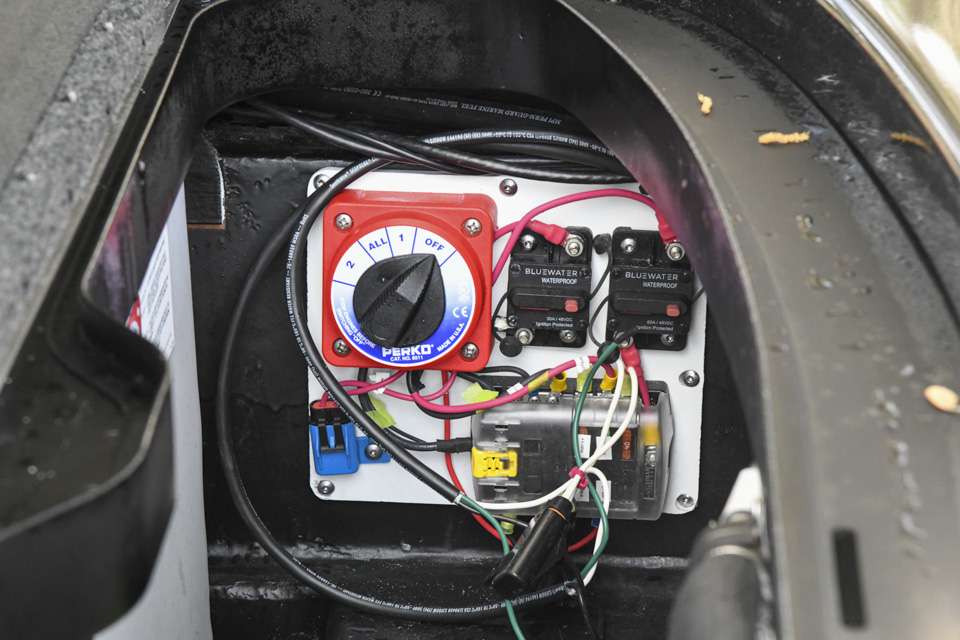
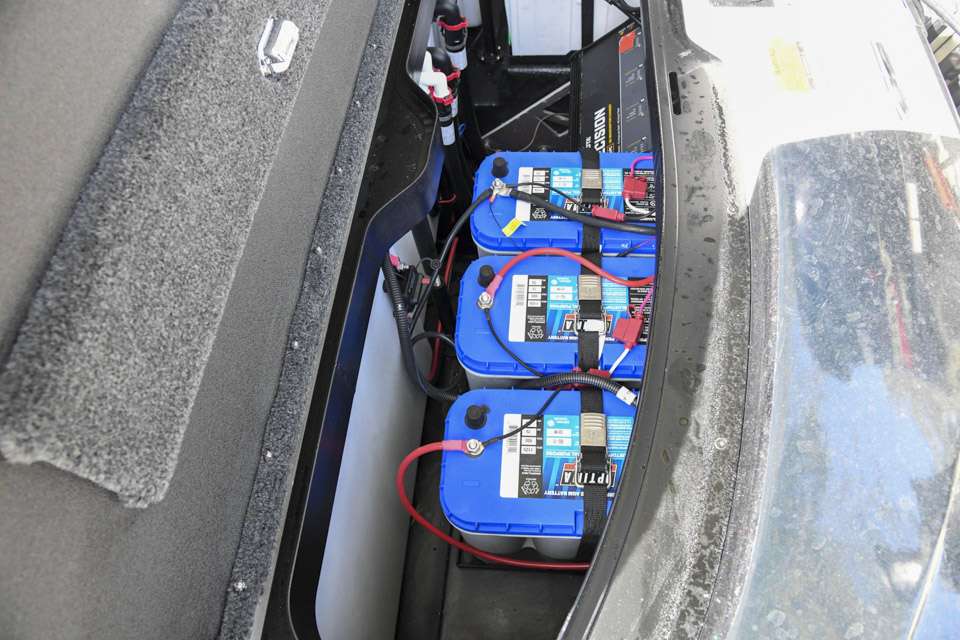
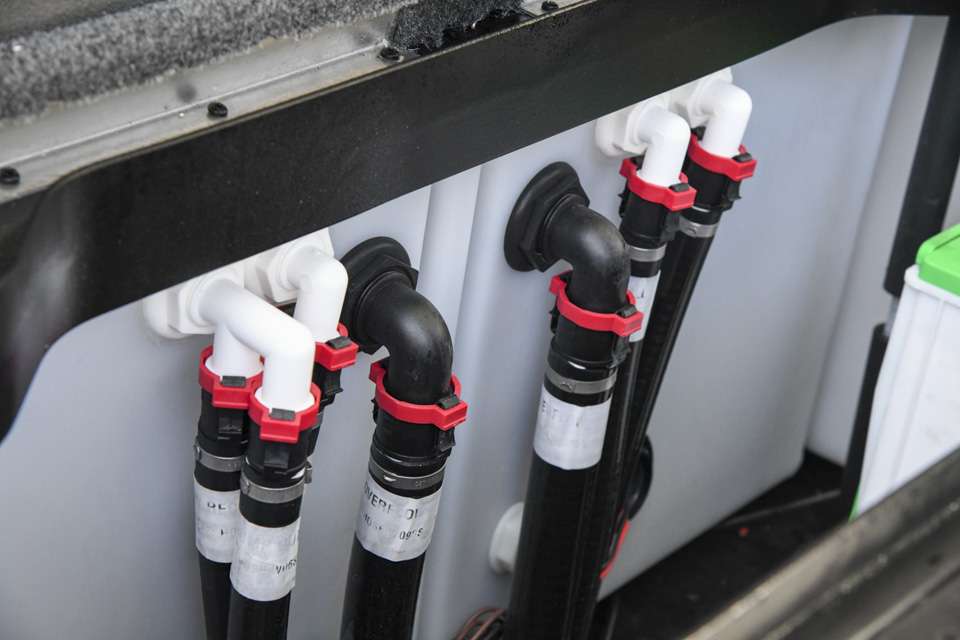
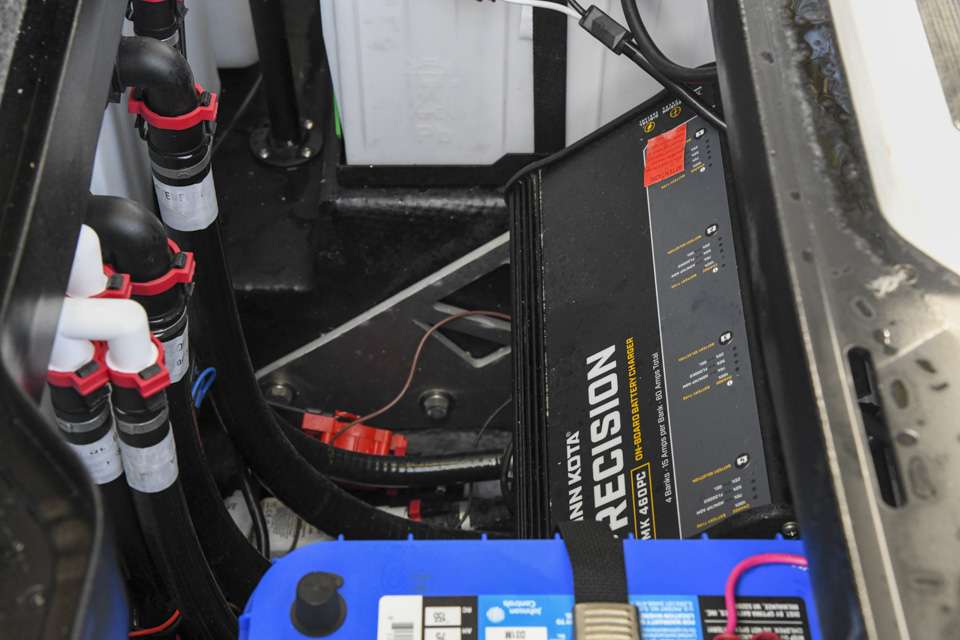
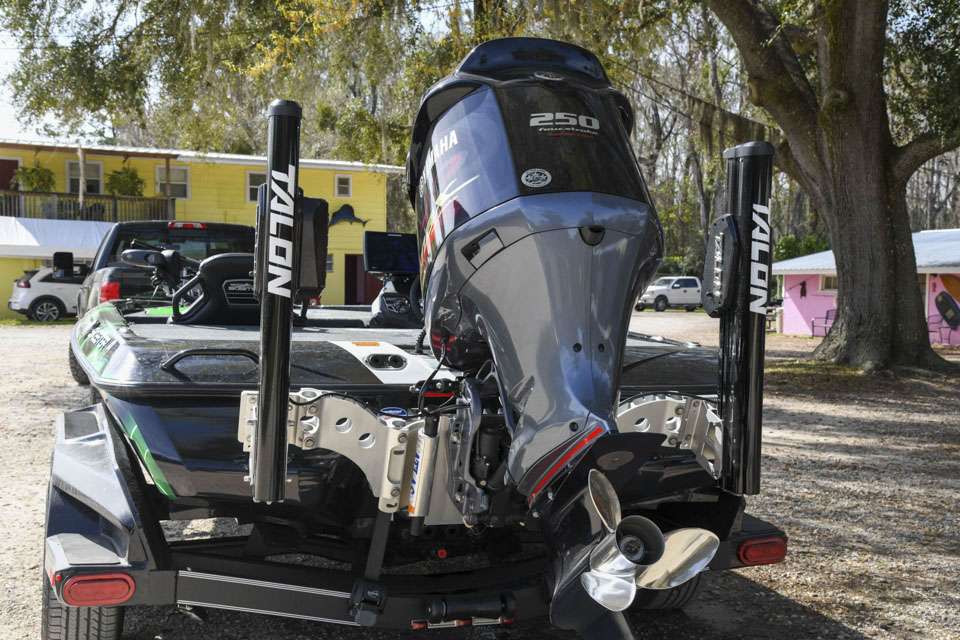
He said the design of the Talons also reduces the risk of drifting in rough water. âSometimes in rough water the other poles will bounce and drift off,â Jaye explained. âYou can set these Talons to a soft bottom, an average bottom or a hard bottom. According to how you set them, every 5 seconds or 10 seconds they will reset themselves. So you donât drift, even in rough water.â
Using two Talons means he can set the poles and not worry about his front deck moving around. âWith one, you can still spin around,â he said. âThe advantage of two is it keeps you dead still.â
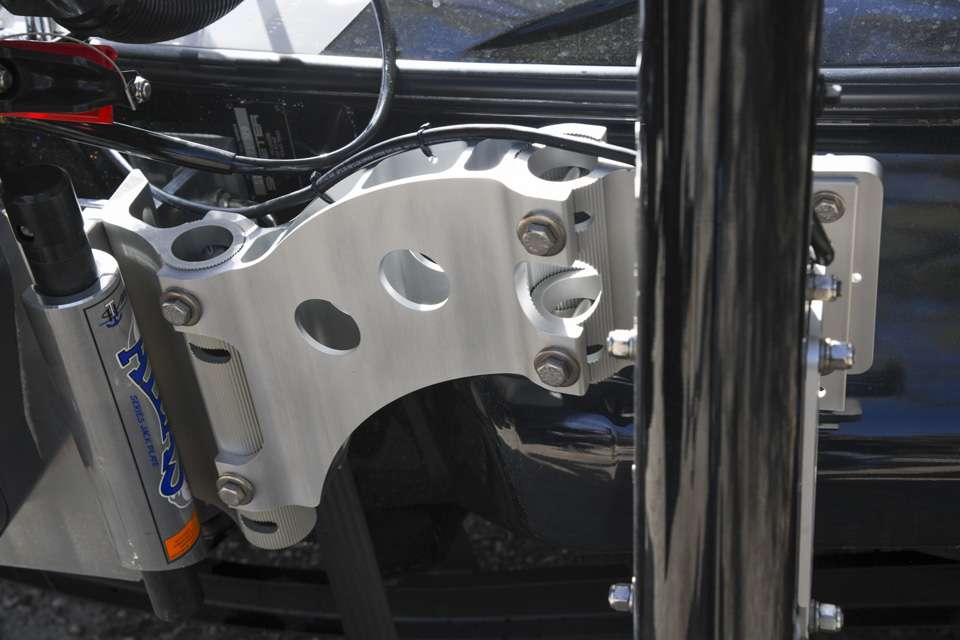
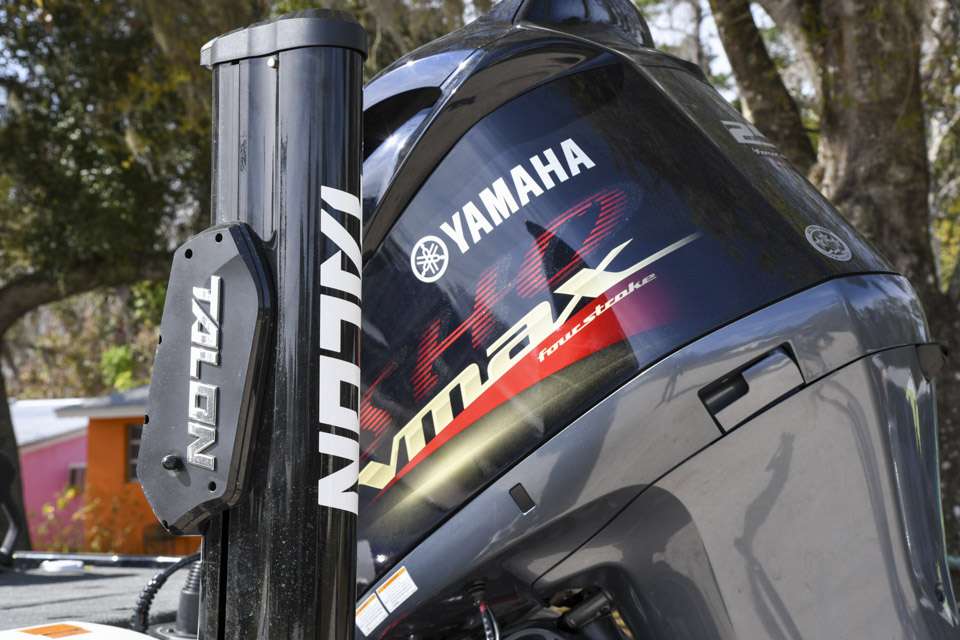
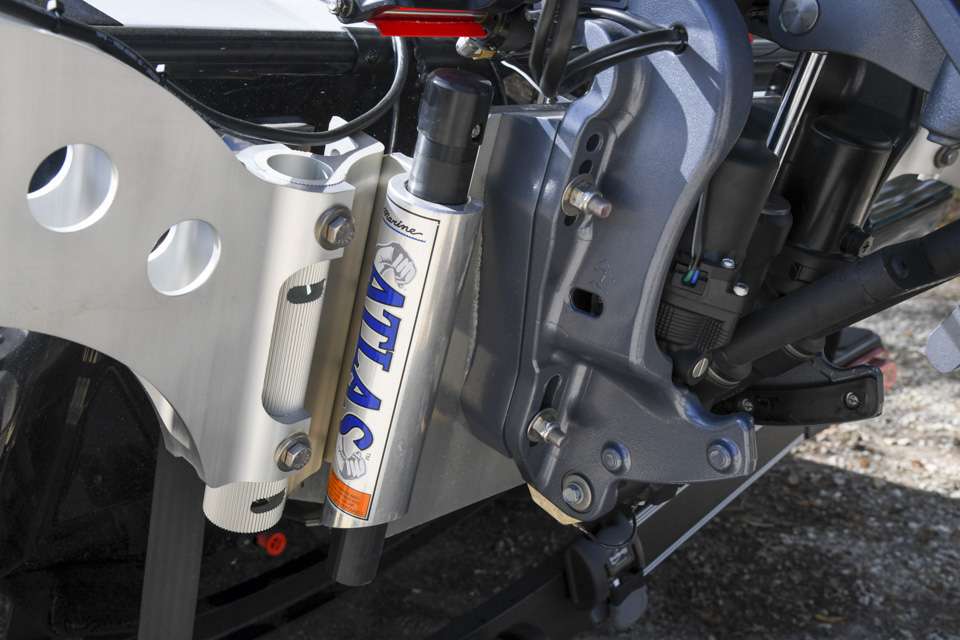
And when he runs in deeper water, he can readjust with the flick of a switch.
âPlus you get optimum speed; once youâre wide open, you can adjust it up or down to get maximum speed,â Jaye said.

